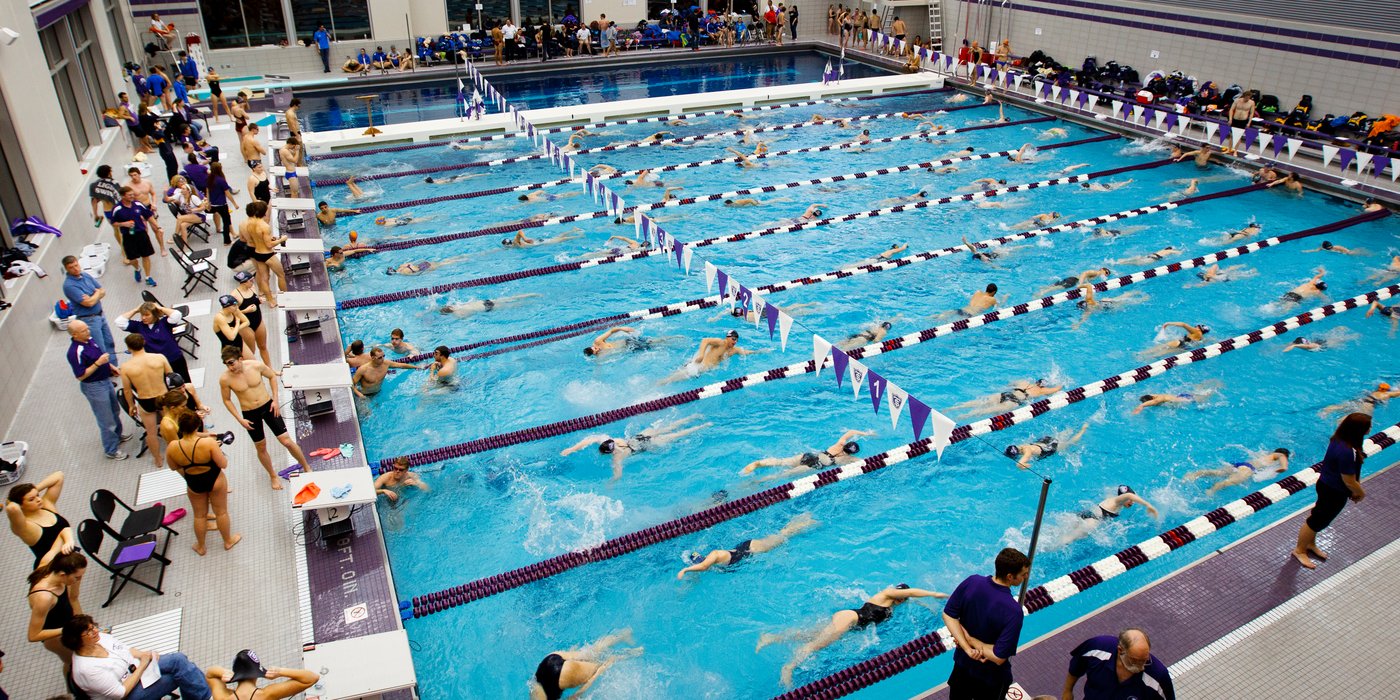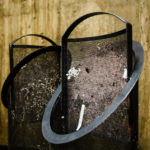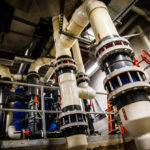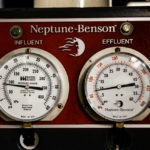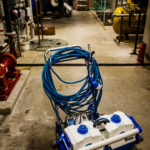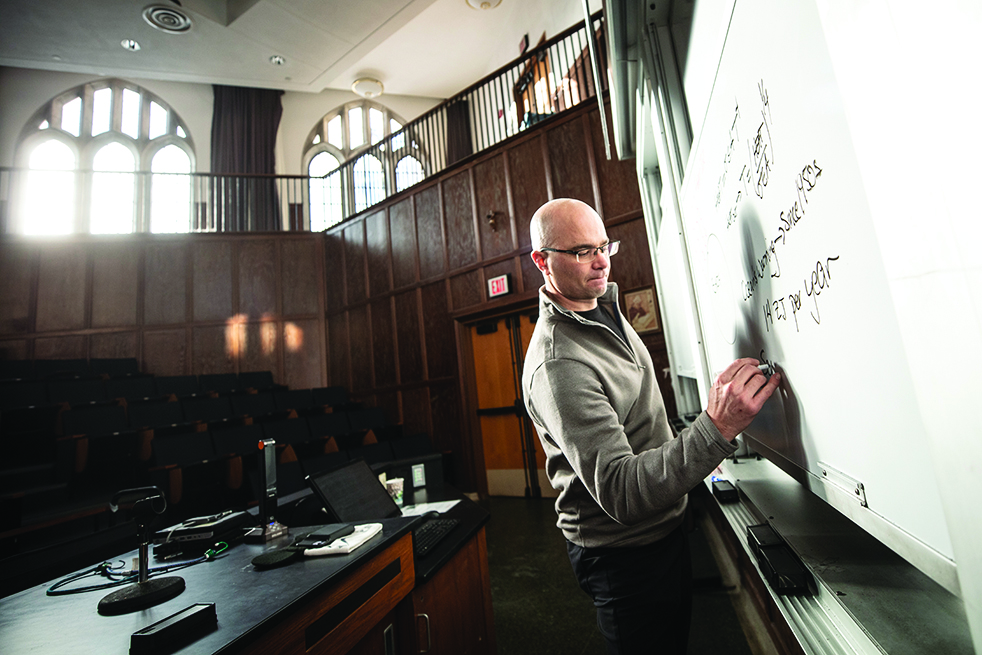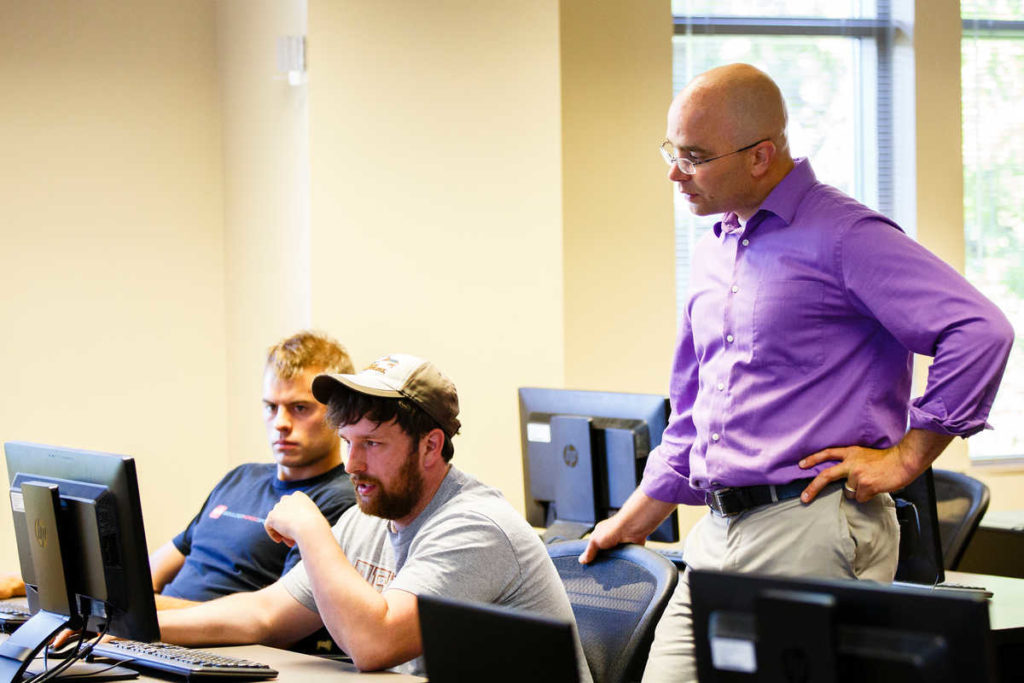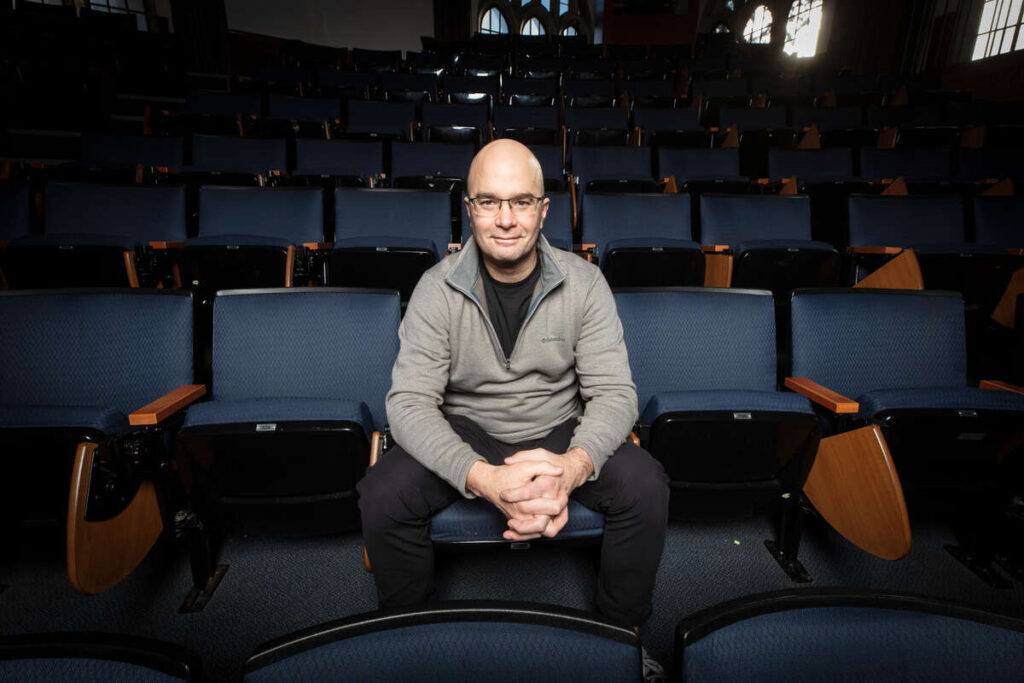The Anderson Student and Recreation Complex pool, like all of the newer construction at St. Thomas, is designed to maintain optimal comfort – while keeping patrons from seeing or hearing all the technology and work it takes to keep it that way, said David Clysdale, chief engineer in St. Thomas' Facilities Management Department. "And in my case, I try to keep everything running so smoothly that people don't feel it," he added.
So how does St. Thomas keep the 560,000 gallons of water that fill the 5-year-old AARC pool looking as clear as glass? Clysdale has the answers.
During the week, a vacuum scuttles along the pool's bottom to clear debris, and Physical Plant pool staff conducts pH tests on the water daily; however, keeping the pool clean and clear is much more involved.
"It's an intricate process, but the pool is actually incredibly easy to maintain," Clysdale said, paying homage to a multifaceted filtration and sanitation system that pumps 1,600 gallons of clean, recycled water into the pool every minute. That's enough efficiency to turn over the entire volume of the pool every five hours. Even more impressive, the system is so efficient that the pool need never be drained. "We'll drain it at some point in time when the water dissolves the grout between the tiles enough that it needs replacing, but until that happens, it's good to go," he said.
Despite the ease, the system is nonetheless awe-inspiring in its simplicity and capability. Filters spaced along the perimeter gutter are the first line of defense in catching larger swimming detritus: bandages, small washcloths (used by diving teams) and swimsuit fragments.
From there, water is filtered into a thunderous mechanical room, situated behind the lifeguard station, where it is pressed through a labyrinthine circuit of pipes and vats. The water first enters one of two large strainers that catch errant debris not collected along the pool's gutter: more bandages and washcloths but also lint and hair. "There's two because we always have a redundancy safeguard in case one stops working," Clysdale said.
The water then is pushed further along through a ceiling-scaling pipe about the circumference of a Big Gulp until it eventually runs through a sand filter – a gauntlet of four giant blue capsule-shaped tanks, each one filled halfway with fine sand. There, microscopic debris, such as dead skins cells, are trapped. "It's amazing how much skin is taken out of the water," Clysdale said. "About once a week we do a back wash where we push water in the the opposite direction because after several days all that skin compacts on top of the sand. The back wash pops it off, kind of like popping off a cap."
In the process, the lifted debris is churned up, and the water flows back down through the sand filter, soon reaching the final sanitizing station, a series of four ultraviolet bulbs within yet another pipe. "The UV light is what keeps the first foot of water in the pool extra clean and soft, so it's easier to swim through," Clysdale said. "I don't know the exact science behind how that works, but it's why if we get blood in the water, it's gone within a few hours."
Finally, the newly cleaned and recycled water flows into a smaller pipe where it's infused with a surprisingly tiny amount of gas chlorine, enough to make the pool 1.5 ppm (parts per million), before it is pumped back into the pool for swimmers to enjoy.
"It's a sought-after facility," Clysdale said, noting that it hosts about 10 swimming and diving meets per academic year as well as regular swim practices by an Olympic triathlete and another professional triathlete from overseas. He also mentioned that when the pool was first filled – with regular tap water from the city – the water was pea green. "That was a sight," he said. "It was the same water you and I drink, so it was completely safe, but we made it cleaner, crystal clear."
Thanks to modern technology (and the hard work of the Physical Plant staff), this state-of-the-art facility will continue to run, well, swimmingly, and continue to be sought after for decades to come.
